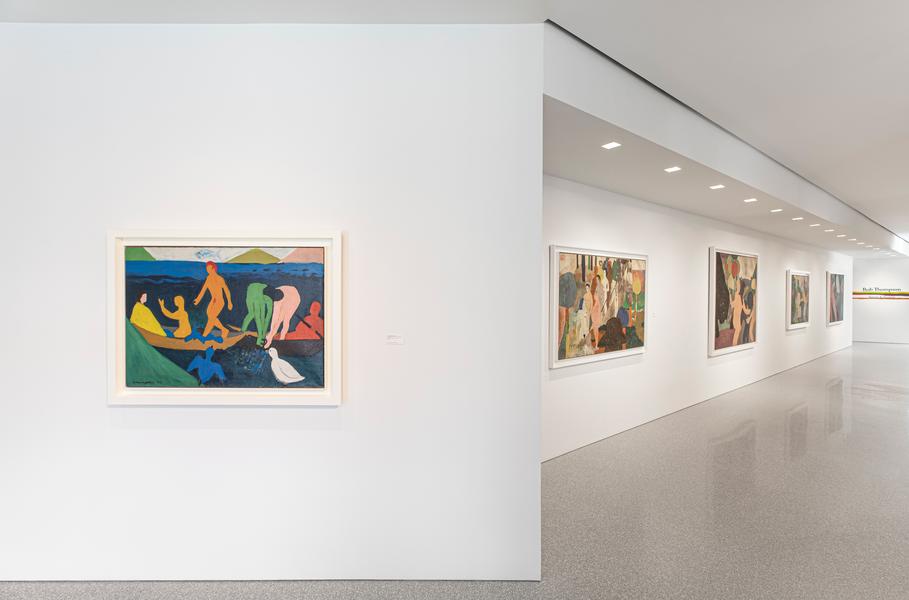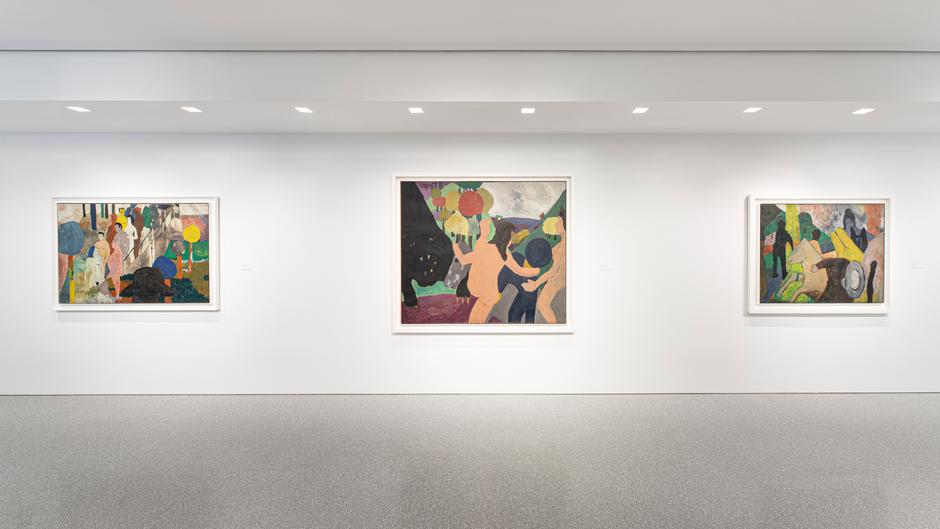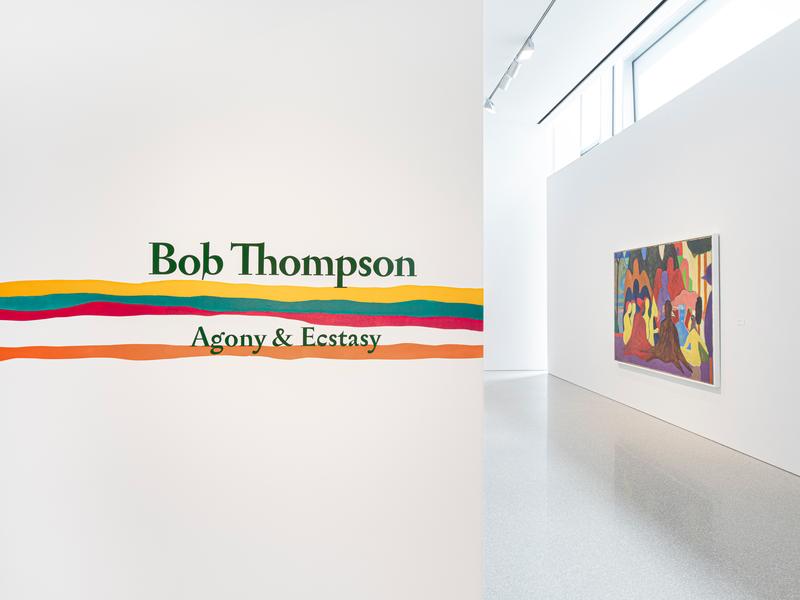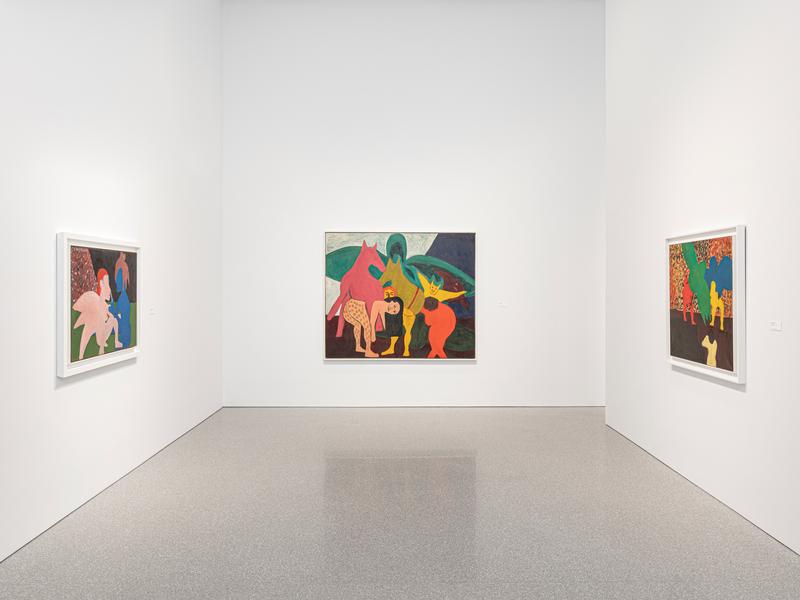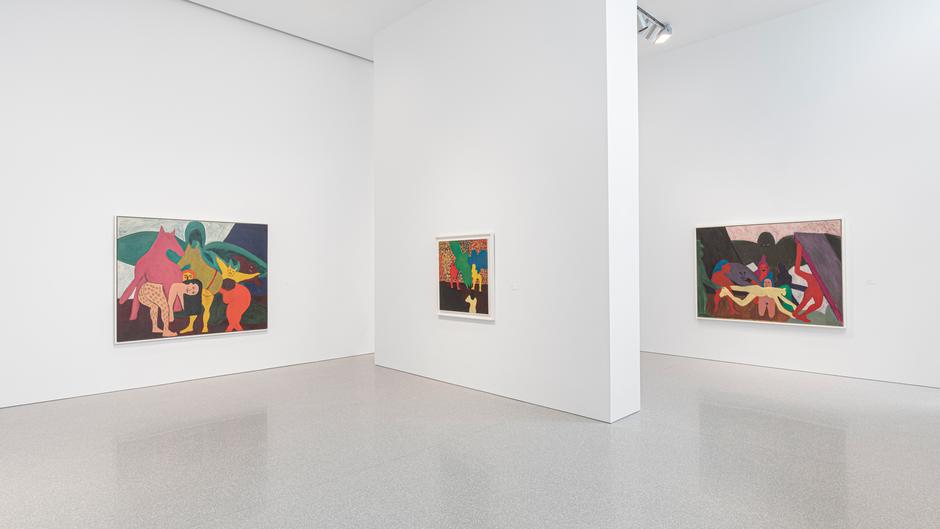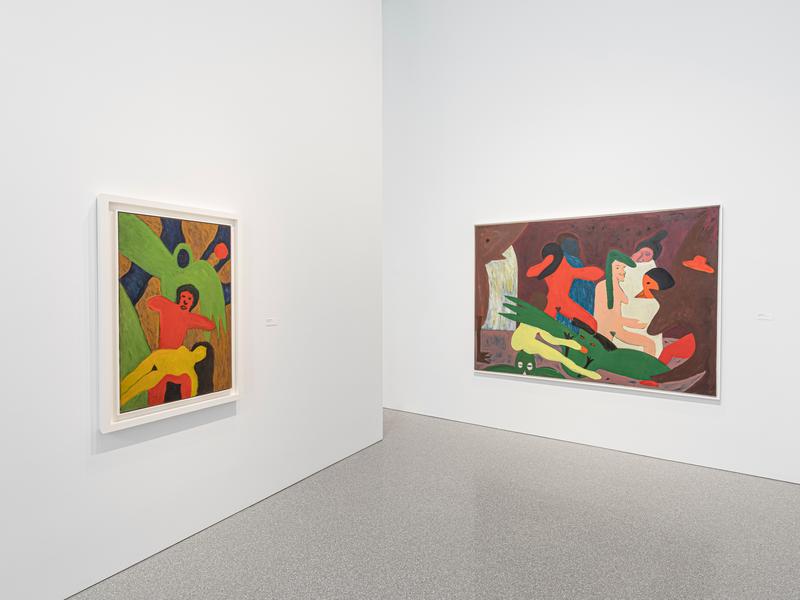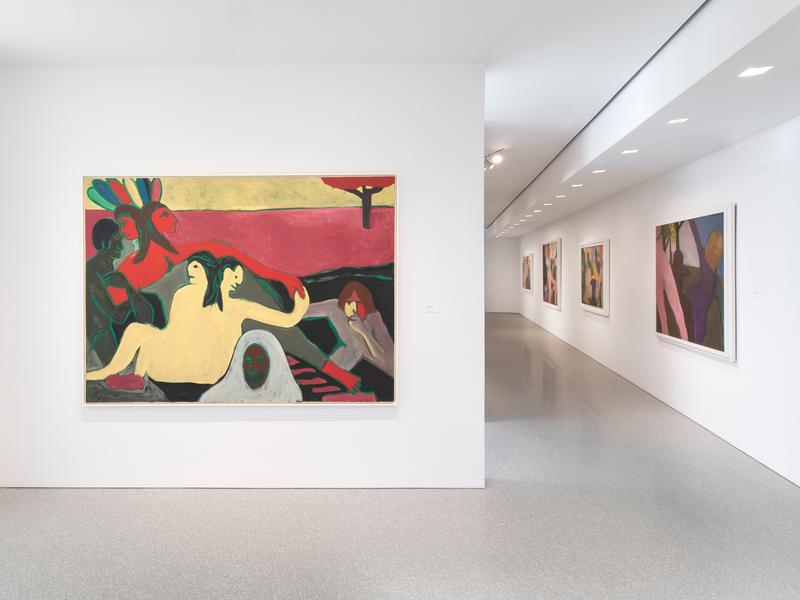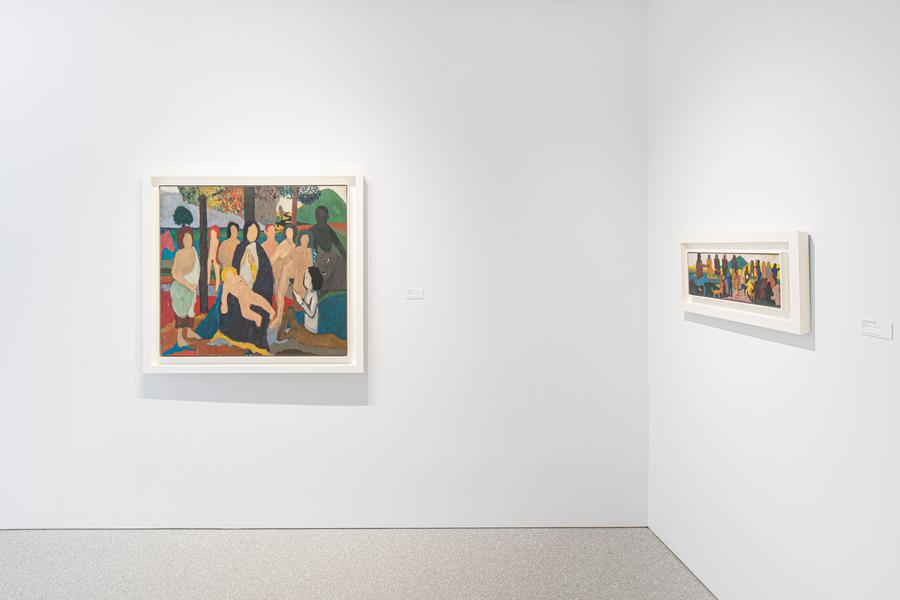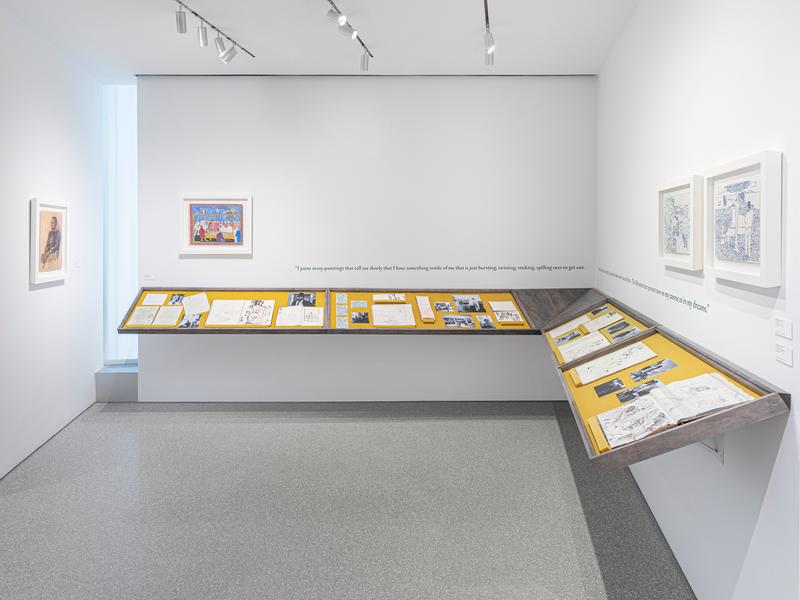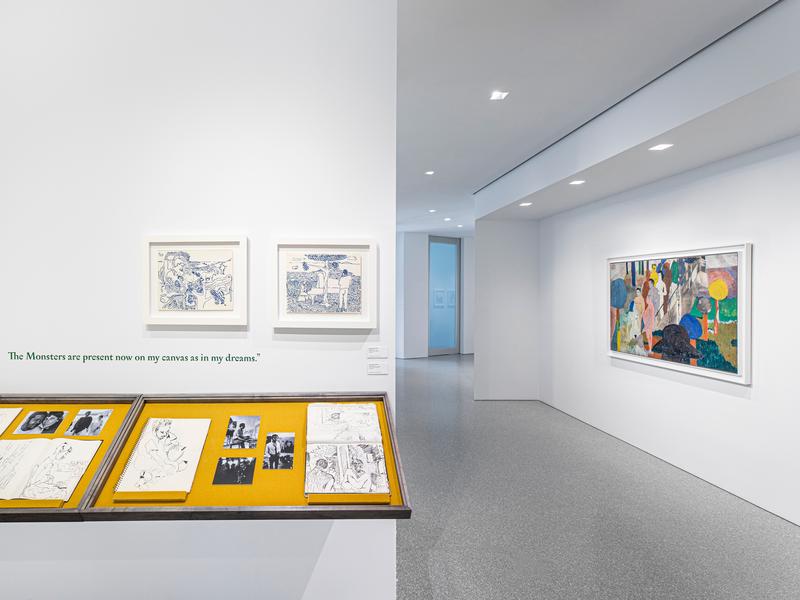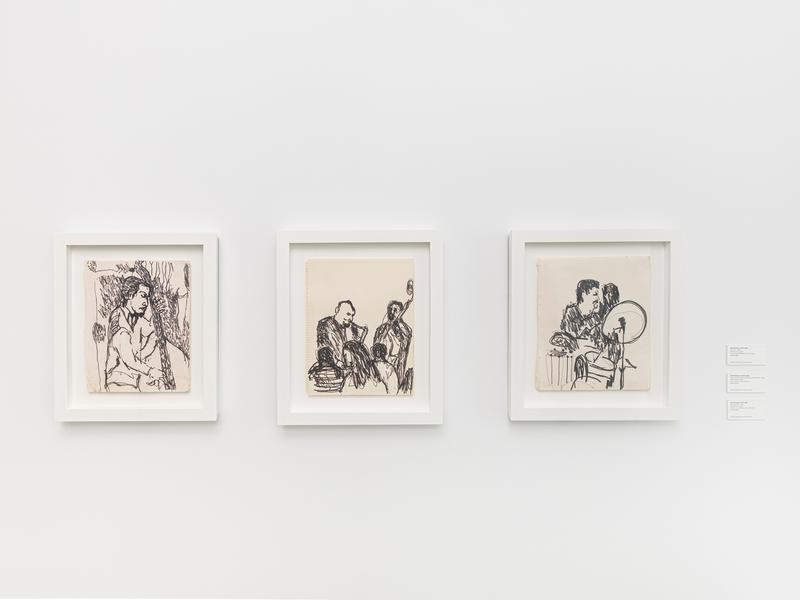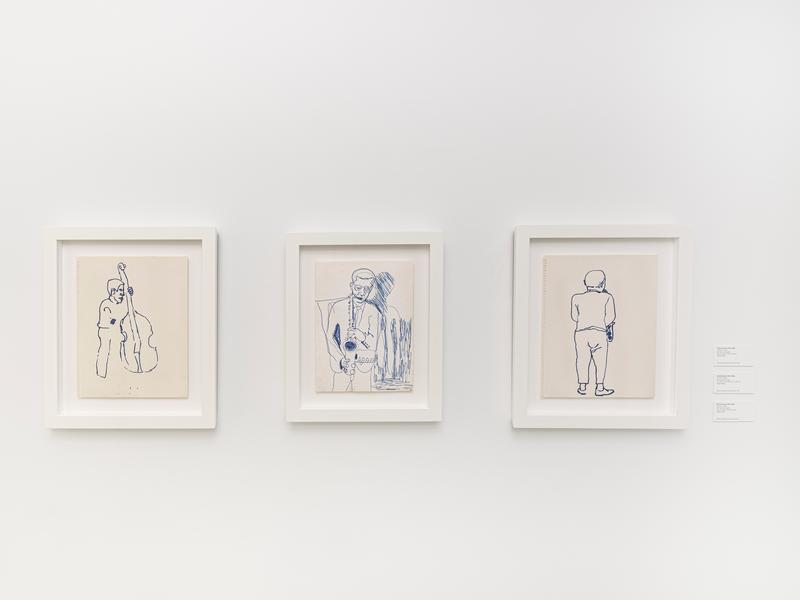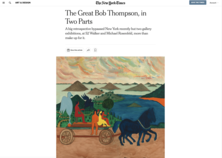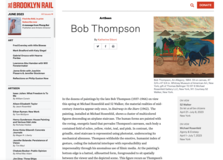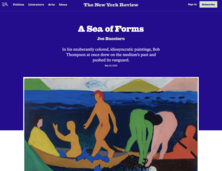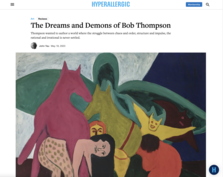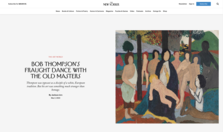Thompson realized that vitality was the only answer to the mystery of being… The mystery of vitality beyond analysis is the central achievement of art because it has always proved that humanity is capable of creating living works that do not lose force when their maker meets the big darkness of death. […] Thompson was an artist of big and foreboding passion, a man whose involvement with his era could be humorous but was never about trying to elevate himself above the human shortcomings and frailties inherent in life.[1]
—Stanley Crouch
[In] a twisted sort of way I am doomed to be buried alive in cadmium orange, red, yellow light with flowers on my grave of magenta violet, and my casket being the canvas for forcefully having to wrap, walk and slide into it every day like the wan Prussian blue shore…[2]
—Bob Thompson
Michael Rosenfeld Gallery is pleased to announce Bob Thompson: Agony & Ecstasy, a solo exhibition and career survey. Presenting major works from each year of the artist’s mature practice, 1958–1966, the exhibition demonstrates the extreme polarities of Thompson’s oeuvre, in which a broad range of art historical references converge through his portrayal of subjects both deeply personal and heroically universal. In addition to over fifteen paintings and a selection of works on paper, Bob Thompson: Agony & Ecstasy includes a special installation of archival photographs and sketchbooks, offering an in-depth look at Thompson’s artistic process.
In a tragically brief life, Bob Thompson (1937–1966) created a complex body of work structured by his own symbolic lexicon, fauvist palettes, and compositional devices drawn from the European Old Master tradition. As inspired by the improvisational riffs of jazz as he was by the formal devices of Fra Angelico, Poussin, and Tintoretto, Thompson’s viscerally executed paintings conjure a psychedelic allegory of his own experience. During the years he lived in New York, the artist was deeply immersed in the avant-garde scene of Manhattan’s Lower East Side, participating in Fluxus happenings, befriending poets Allen Ginsberg and LeRoi Jones (Amiri Baraka), and frequenting legendary jazz clubs, especially the Five Spot and Slugs’ Saloon.
Titled after Irving Stone’s 1961 biographical novel of Michelangelo Buonarotti, Bob Thompson: Agony & Ecstasy demonstrates the impassioned fervor with which Thompson pursued his vision in defiance of prevailing social limitations; where the Renaissance sculptor saw an angel in a slab of marble and carved until he set him free, Thompson saw himself in the canon of Western painting and revised, collaged, and electrified its components until the spark of life manifested on his canvas. Put in modern terms, Thompson was a quintessential Beat,[3] as Thelma Golden submits in her text for the artist’s 1998 retrospective at the Whitney Museum of American Art, especially as it was defined by Lisa Philips’ exhibition on the movement mounted at the museum three years earlier, which included Thompson’s 1965 portrait of Ginsberg:
The search for alternative consciousness, the mystical side of the Beats, goes hand in hand with their gritty realism and rebellion. These two sides—the ecstatic and the horrific, the beatific and the beaten, define the poles of the Beat experience.[4]
By turns volcanically hot and fluorescently cool, the kaleidoscopic palettes of Thompson’s paintings embody the hallucinatory ethos of his moment while the formal schema drawn from the historical masterworks he obsessively studied ground his subjects in familiar narratives of tragedy, adoration, and rebellion. Often set in a pastoral countryside or dense woodlands, Thompson’s scenes are populated by Madonnas and saints, monstrous birds, anthropomorphic donkeys, shadowy men in fedoras, and more. “Thompson’s distortion of natural form and his transgressions of category, such as human and animal,” writes curator Slade Stumbo, “destabilize notions of the real and evoke a sense of a dream state which is furthered by the fantastic setting that is absent of any reference to any actual place. Thompson’s overarching theme in this work becomes the movement between realms, metamorphosis.”[5]
Highlights of Bob Thompson: Agony & Ecstasy include five large-scale paintings dating to a landmark year in the artist’s practice, 1963, which exemplify his radical approach and constitute a culmination of his travels in Europe from the spring of 1961 to the fall of 1963—his first journey to the continent. Dramatic tableaux of enigmatic interactions and sparse, set-like environs that focus attention on the figures of such works as Untitled (The Proofing of the Cross) and The Nativity revise the central action of their 15th-century referents to compose a scene that embodies the artist’s own desires and fears. Thompson’s extensive engagement with the works of Spanish Romanticist Francisco Goya reaches its pinnacle in The Struggle, The Dentist, and Tribute to An American Indian, which appropriate select forms from Goya’s Los Caprichos (1799), a set of eighty prints composed as an allegory for the follies of Spanish society; executed during an inflection point in the Civil Rights Movement, many of Thompson’s works suggest a parable of racial identity shaped by the blood-soaked history of his home nation.

